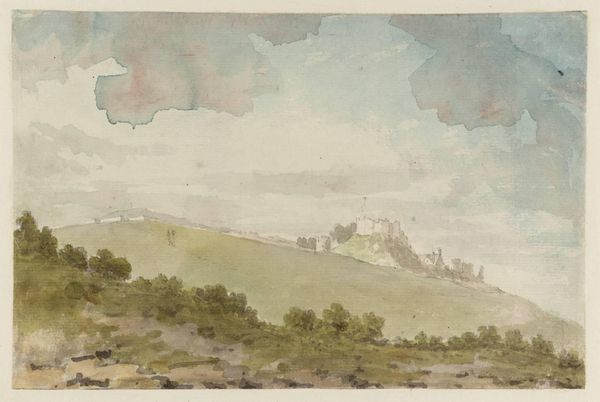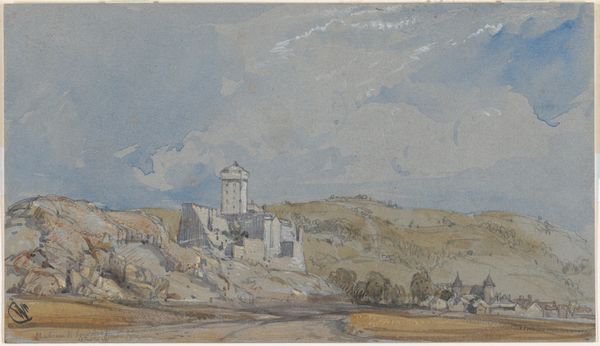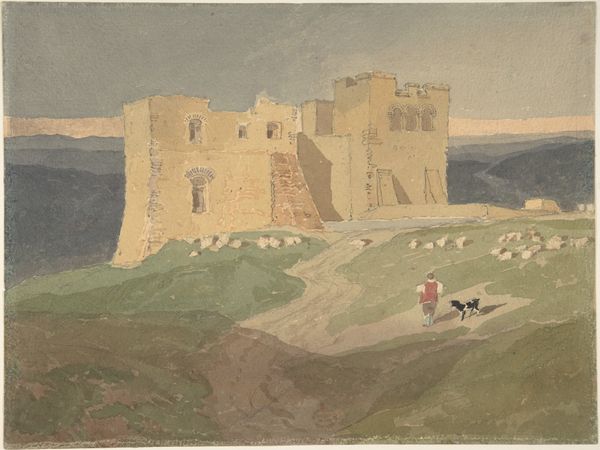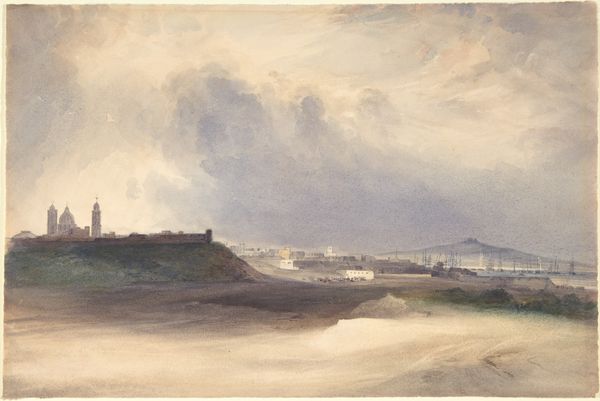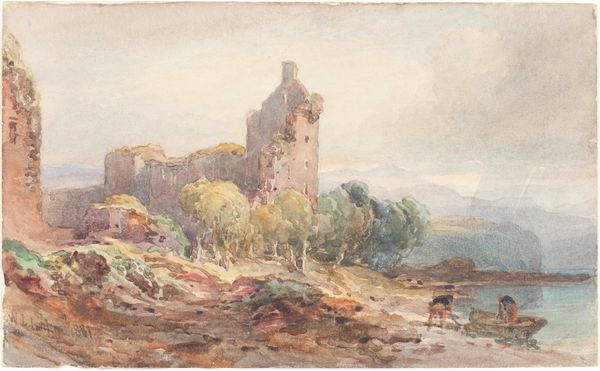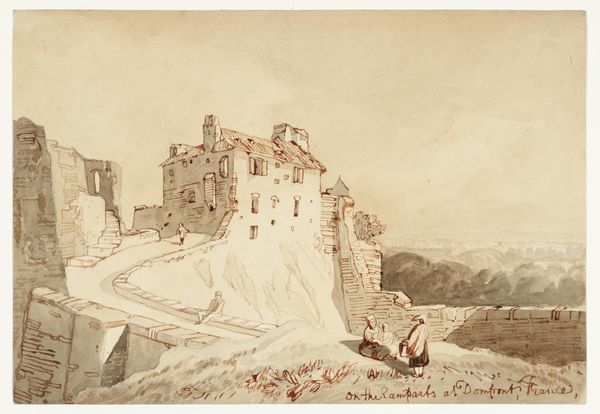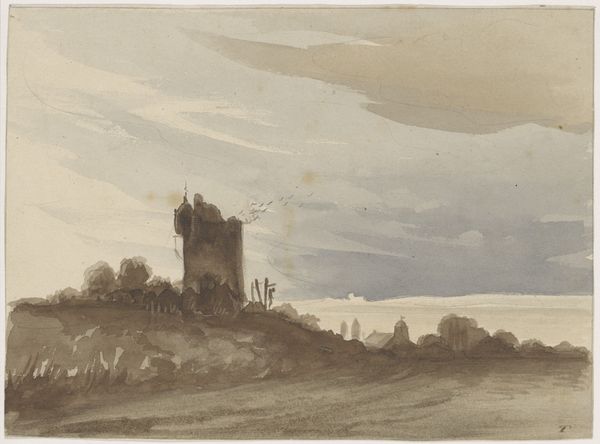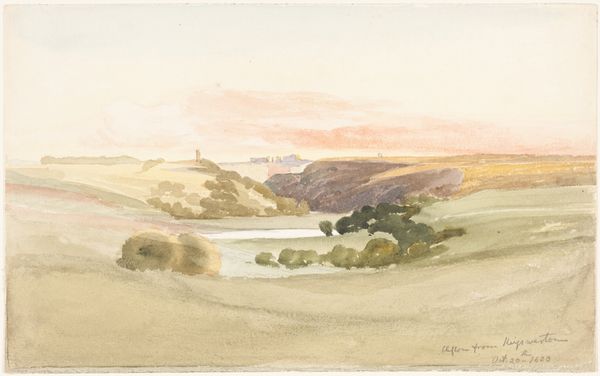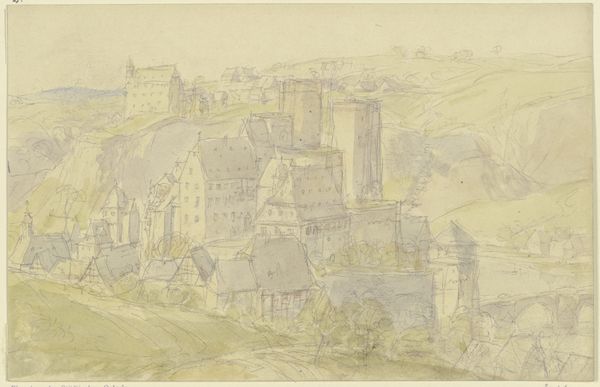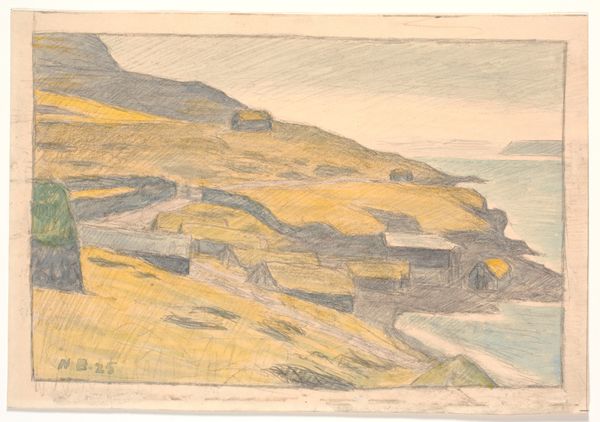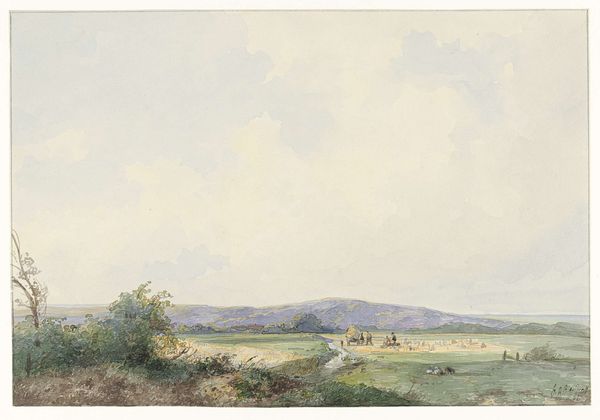
drawing
#
landscape illustration sketch
#
drawing
#
light pencil work
#
pencil sketch
#
incomplete sketchy
#
possibly oil pastel
#
coloured pencil
#
watercolour bleed
#
watercolour illustration
#
watercolor
#
warm toned green
Dimensions: overall: 16.7 x 25 cm (6 9/16 x 9 13/16 in.)
Copyright: National Gallery of Art: CC0 1.0
Editor: This is "Castle on a Hill," a watercolour drawing from around the 19th century by James Bulwer. It feels like a fleeting glimpse, like the artist quickly captured a scene. What catches your eye in this piece? Curator: The materials, definitely. This isn't about a grand statement; it's about the direct application of pigment to paper. Think about the accessibility of watercolor at this time. It's a portable, relatively inexpensive medium, ideal for someone like Bulwer to quickly document the landscape. We need to consider this choice. Was Bulwer interested in exploring the subtleties afforded by watercolor or documenting an evolving cultural landscape? Editor: That’s interesting, I hadn't considered the material itself. So the accessibility of watercolor says something about the artist's intent, perhaps? Curator: Exactly! The thin washes, the visible brushstrokes… they speak to a process more akin to scientific recording than, say, romantic idealization. He’s working on paper - was it handmade or machine made? These details shape meaning. Also, what’s absent matters. What other marks were on the paper, what did these limit the creation? Editor: I see what you mean. The choice of a quick, almost on-the-spot medium impacts the feel of the piece. It’s less about permanence and more about the act of observation. It also looks like some corrections were attempted and remain visible in the hill itself, and at the base near what look to be animal remains. Does this add some authenticity to it as well? Curator: The 'authenticity' lies precisely in acknowledging the constraints, in celebrating the imperfections inherent in the chosen medium and production process. And even what it is imitating as a scene; the architecture, the geography. Editor: I’m starting to see how important the materials are, and the historical background for something like a drawing or a watercolor. It really changes my perspective on the piece. Curator: Indeed. By thinking critically about materials, we gain insight into the artist’s decisions, intentions, and broader societal context. The hand shapes matter here.
Comments
No comments
Be the first to comment and join the conversation on the ultimate creative platform.

